The ICP-MS 2000E is a cutting-edge inductively coupled plasma mass spectrometer developed independently by Tianrui. It offers excellent performance at an affordable cost, making it a reliable choice for various analytical applications. The instrument features an autosampler to automate the testing process and improve efficiency. Its advanced collision reaction cell technology effectively eliminates polyatomic ion interference, reducing detection limits for elements that are typically hard to measure. Additionally, the intelligent software includes preloaded application packages, simplifying sample analysis and enhancing data reliability. The ICP-MS 2000E is widely used in environmental monitoring, food safety, semiconductor manufacturing, nuclear energy, petrochemicals, mineral analysis, and medical research.
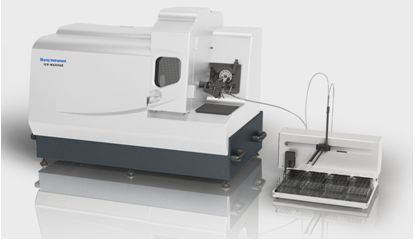
Figure 1. ICP-MS 2000E Inductively Coupled Plasma Mass Spectrometer
Principle
In ICP-MS, one of the main sources of interference is polyatomic ions. These can be mitigated using mathematical correction algorithms or through the use of a collision reaction cell (CRC). The CRC introduces gases like helium and hydrogen, which help dissociate interfering polyatomic ions, thereby minimizing their impact on the measurement of target isotopes. In this study, the ICP-MS 2000E was used to analyze iron, chromium, arsenic, manganese, cadmium, and lead in surface water samples. The He/Hâ‚‚ gas mixture was employed as the collision reaction gas to reduce argon-based polyatomic ion interference. The method demonstrated good detection limits, accuracy, and stability, meeting standard requirements.
2. Experiment
2.1 Reagents and Instruments
HNO₃ (GR Scharlau);
HCl (GR Scharlau);
Elemental standard solution (10 μg·mLâ»Â¹, inorganic ventures);
Inductively coupled plasma mass spectrometer (ICP-MS 2000E, Jiangsu Tianrui Instrument Co., Ltd.);
Laboratory water with resistivity of 18.25 MΩ·cm (Merck Millipore).
2.2 Sample Pretreatment
A surface water sample was collected from Kunshan. Following the national environmental testing standard HJ700-2014, the sample was filtered using a 0.45 μm membrane, acidified with HNO₃ to adjust pH below 2, and spiked with standard solutions of each element. The spiking concentrations were: Sc, Cr, As, Se, Cd, Pb at 4 μg·Lâ»Â¹; Mn at 50 μg·Lâ»Â¹; Fe at 200 μg·Lâ»Â¹; Ni, Zn at 10 μg·Lâ»Â¹.
2.3 Instrument Operating Parameters Optimization
The instrument was first optimized using a tuning solution containing Li, Co, In, U, Ce at 10 μg·Lâ»Â¹ to achieve maximum sensitivity while keeping oxide and double charge yields below 3%. Then, the He/Hâ‚‚ collision reaction gas was introduced, and its flow rate was gradually increased. Background equivalent concentration was calculated at 75 amu using ultrapure water, 4% HCl, and 10 μg·Lâ»Â¹ As in 4% HCl medium. Further optimization was performed using the As standard solution, and the final operating parameters are listed in Table 2.
Table 1. Background Equivalent Concentration at 75 amu in He/Hâ‚‚ Collision Reaction Mode
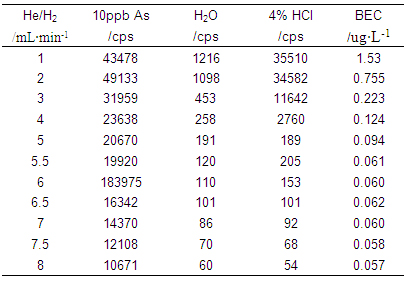
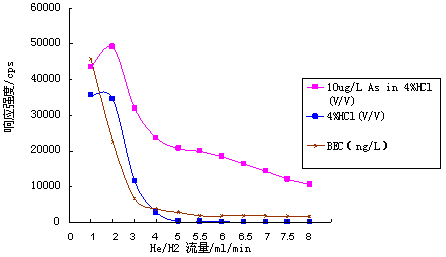
Figure 2. Background Concentration in He/Hâ‚‚ Collision Reaction Mode (BEC multiplied by 30 times for visualization)
Table 2. Instrument Operating Parameters in Collision Reaction Mode

3. Data and Discussion
3.1 Argon-Based Polyatomic Interfering Ions
In quadrupole ICP-MS systems, argon plasma gas can combine with matrix ions to form polyatomic interferences. This causes issues in measuring target isotopes. For example, Ar⺠combined with other elements can interfere with measurements of Fe, Cr, As, and Se. Standard solutions of Cr (3% HAc), Fe (1% HNO₃), As (4% HCl), and Se (1% HNO₃) were tested in both standard and collision reaction modes. Results showed that the signal intensities of 56Fe and 57Fe closely matched their natural abundance ratios, and similar trends were observed for 52Cr and 53Cr. These findings confirm that the He/H₂ collision reaction gas effectively suppresses argon-related polyatomic interference.
Table 3. Argon-Based Polyatomic Interference Ions

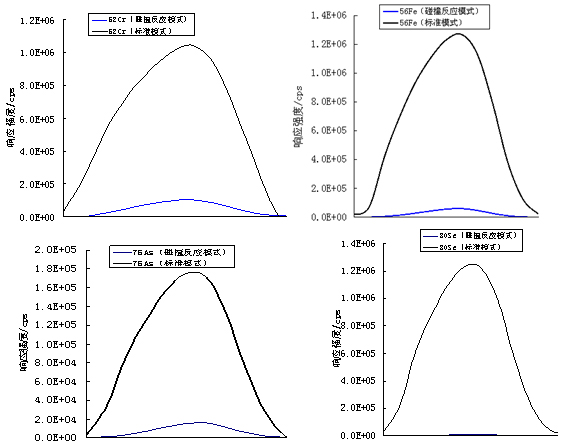
Figure 3. Response Signals of 52Cr, 56Fe, 75As, 80Se in Standard and Collision Reaction Modes
3.2 Spike Recovery and Precision
After optimizing the instrument parameters, the sample and standard solutions were analyzed to calculate recovery rates. Seven blank samples were measured in parallel to determine the detection limit based on three times the standard deviation. Eleven replicate measurements of the sample solution were taken at 2-minute intervals to evaluate precision. The results showed detection limits ranging from 0.41 to 22.07 ng/L, recoveries between 93.82% and 123.10%, and relative standard deviations between 1.06% and 8.43%.
Table 4. Standard Recovery and Precision
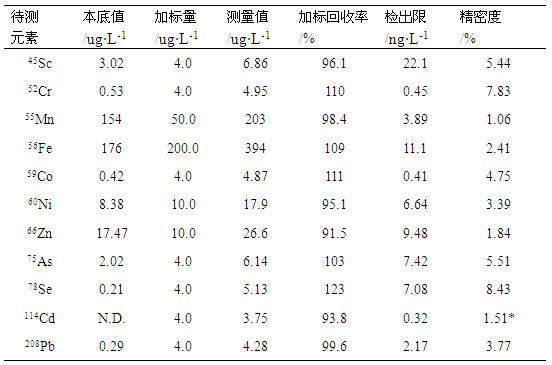
4. Conclusion
Optimizing the He/Hâ‚‚ collision reaction gas flow rate significantly reduced argon-based polyatomic ion interference, enabling accurate measurement of key isotopes such as Fe and Se. Through evaluation of detection limits, recovery rates, and precision, it was confirmed that the ICP-MS 2000E in collision reaction mode effectively minimizes polyatomic ion interference and meets the requirements for industrial analysis of metal elements in surface water.
Zippered Cable Repair Patch
Zippered Cable Repair Patch,Heat-shrink tube,Heat shrinkable tubing,thermal contraction pipe,Shrink tube
Mianyang Dongyao New Material Co. , https://www.mydyxc.com